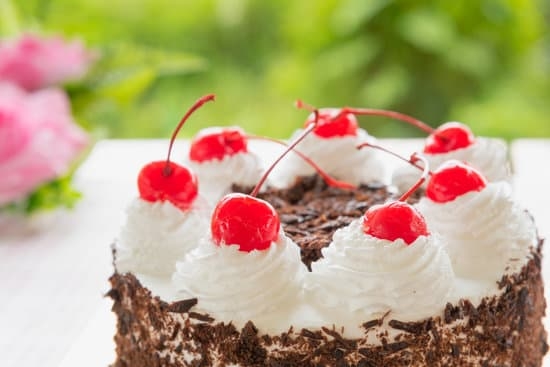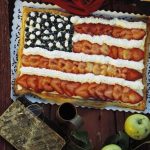Are you looking to elevate your cake decorating skills? Learn how to make stiff icing for decorating cakes with the perfect consistency and texture. Stiff icing plays a crucial role in creating intricate designs, piping borders, and adding details to your baked creations. Whether you are a baking enthusiast or a professional baker, mastering the art of stiff icing can take your cakes to the next level.
When it comes to cake decorating, the type of icing you use can make all the difference. From buttercream to royal icing, there are various options available for creating stunning designs on your cakes. However, stiff icing is often preferred for intricate decorations that require more precision and stability. Understanding the importance of using stiff icing will help you achieve professional-looking results that will impress your friends, family, or customers.
In this comprehensive guide, we will explore everything you need to know about making and using stiff icing for cake decorating. From listing essential ingredients and tools to providing expert tips and troubleshooting advice, you will learn how to create beautiful and deliciously decorated cakes that will be the highlight of any celebration.
Get ready to unleash your creativity and turn your desserts into works of art with our step-by-step instructions and creative ideas for coloring and flavoring stiff icing.
Types of Icing
When it comes to cake decorating, the type of icing you choose to use can make a big difference in both the appearance and taste of your dessert. There are several different types of icing that are commonly used for decorating cakes, each with its own unique characteristics and uses. Some of the most popular types of icing include buttercream, royal icing, fondant, and cream cheese icing.
Buttercream icing is a classic choice for cake decorating due to its creamy texture and versatility. It can be easily flavored and colored to suit any theme or occasion, making it a favorite among home bakers and professional cake decorators alike. Royal icing, on the other hand, is a hard-drying icing that is perfect for intricate designs and decorations. It is commonly used for piping flowers, borders, and other delicate details on cakes.
Fondant is another popular choice for cake decorating as it provides a smooth and polished finish that can be easily molded into shapes or figures. While fondant may not have the same flavor as buttercream, it offers a clean canvas for creativity and allows for more elaborate designs.
Lastly, cream cheese icing brings a tangy flavor to cakes and pairs well with carrot cake or red velvet cake. Each type of icing has its own strengths and weaknesses, so choosing the right one will depend on the desired look and taste of your finished creation.
Ingredients Needed
When it comes to cake decorating, having the right type of icing is crucial for achieving beautiful and professional-looking results. One of the most commonly used icings for intricate designs and decorations is stiff icing. This type of icing holds its shape well, making it ideal for piping borders, flowers, and other intricate details on cakes. In this section, we will discuss the essential ingredients needed to make stiff icing at home.
Confectioners’ Sugar
Also known as powdered sugar or icing sugar, confectioners’ sugar is the primary ingredient in stiff icing. Its fine texture helps create a smooth and easily pipeable consistency. Make sure to sift the confectioners’ sugar before using it to prevent any lumps in your icing.
Egg Whites or Meringue Powder
Egg whites or meringue powder are used as a stabilizer in stiff icing recipes. They help give the icing structure and stability, allowing it to hold its shape when piped onto a cake. If you prefer not to use raw egg whites, meringue powder can be a suitable alternative.
Flavorings and Extracts
To add flavor to your stiff icing, you can incorporate vanilla extract, almond extract, lemon juice, or other flavorings of your choice. These additions not only enhance the taste but also give your decorations a delicious aroma. Just be mindful of how much liquid you add so that it doesn’t affect the consistency of your icing.
By gathering these key ingredients and following the step-by-step instructions provided in this article, you’ll be well on your way to creating stunning decorations with stiff icing on your cakes. Experiment with different flavors, colors, and decorating techniques to unleash your creativity and elevate your cake decorating skills.
Tools and Equipment
Pastry Bags and Piping Tips
One of the essential tools needed for decorating cakes with stiff icing is a pastry bag. These bags come in various sizes and materials, such as disposable plastic or reusable cloth, allowing for different decorating techniques. Along with pastry bags, having a variety of piping tips is also important to create different designs and textures on the cake.
Offset Spatula and Bench Scraper
An offset spatula is another crucial tool when working with stiff icing. This tool helps to spread the icing smoothly over the cake surface and achieve clean edges. A bench scraper is useful for smoothing out the icing on the sides of the cake, ensuring a professional finish.
Cake Turntable
A cake turntable is a handy piece of equipment that makes decorating with stiff icing much easier. By placing the cake on a turntable, decorators can easily rotate the cake while applying icing, resulting in even coverage and precise decorations. It allows for smooth and effortless decorating without having to constantly maneuver around the cake.
When preparing to decorate cakes with stiff icing, having these essential tools and equipment on hand will make the process more efficient and enjoyable. With the right tools, decorators can achieve professional-looking cakes that are beautifully adorned with intricately piped designs and details.
Step-by-Step Instructions
When it comes to decorating cakes, having the right consistency of icing is crucial. Stiff icing is a popular choice for cake decorators because it holds its shape well and allows for intricate designs and decorations. Whether you’re a beginner or a seasoned baker, learning how to make stiff icing for decorating cakes is essential.
To make stiff icing from scratch, you will need a few key ingredients. These typically include confectioners’ sugar (also known as powdered sugar), meringue powder or egg whites, vanilla extract, and water. The confectioners’ sugar serves as the base of the icing, while the meringue powder or egg whites help give it structure and stability. Vanilla extract adds flavor, and water is used to adjust the consistency of the icing.
To begin making stiff icing, start by sifting your confectioners’ sugar to remove any lumps. In a clean mixing bowl, combine the sifted sugar with meringue powder or egg whites. Begin mixing on low speed until well combined. Slowly add in vanilla extract and water, adjusting the amount of water as needed to achieve the desired stiffness.
Be mindful not to add too much water at once, as you can always add more but cannot take it away once added. Keep mixing on medium-high speed until stiff peaks form – this means when you lift your spatula out of the mixture, the icing should hold its shape without drooping. Congratulations. You’ve successfully made stiff icing for decorating cakes.
Tips and Tricks
When it comes to decorating cakes, having the right consistency and texture of icing is crucial for achieving beautiful and professional-looking designs. Stiff icing, in particular, plays a key role in creating intricate decorations that hold their shape and add depth to your cakes. Here are some expert tips on how to make stiff icing for decorating cakes:
1. Use the right ratio of ingredients: To achieve stiff icing, you will need a higher ratio of powdered sugar to liquid compared to softer icing types. A commonly used recipe for stiff royal icing involves mixing 4 cups of powdered sugar with 3 tablespoons of meringue powder and around 6 tablespoons of water or lemon juice. Adjust the consistency by adding more powdered sugar if needed.
2. Whip it up: When making stiff icing, be sure to whip the mixture thoroughly using an electric mixer on medium to high speed. This will help incorporate air into the mixture and give it the right stiffness for piping and decorating.
3. Test the consistency: To check if your icing has reached the desired stiffness, lift the beater or spoon from the bowl and observe how the icing holds its shape. If it forms stiff peaks that do not collapse or droop easily, then you have successfully achieved stiff icing ready for decorating your cakes.
These expert tips will help you master the art of making stiff icing for your cake decorating projects. With practice and patience, you’ll soon be able to create stunning designs that will impress your friends and family at any special occasion.
Coloring and Flavoring Options
When it comes to decorating cakes with stiff icing, the coloring and flavoring options are endless. Adding color to your icing can make your cake designs stand out and add a pop of vibrancy.
It is essential to use gel or paste food coloring instead of liquid food coloring to prevent altering the consistency of the icing. You can create a variety of hues by mixing different colors together, allowing you to customize your creations according to the occasion or theme.
In addition to color, flavoring your stiff icing can take your cake decorating to the next level. While vanilla is a popular choice, there are countless other flavors you can experiment with, such as almond, lemon, raspberry, or even coconut. You can use extracts or emulsions for added flavor without compromising the stiffness of the icing. Just be mindful of adding too much liquid when incorporating flavorings to ensure that the consistency remains stiff enough for decorating.
For a creative twist on traditional icing, consider using natural ingredients like matcha powder for a vibrant green hue and earthy flavor, or cocoa powder for a rich chocolatey taste. You can also infuse your icing with spices like cinnamon or nutmeg for a warm and cozy touch. Experimenting with different coloring and flavoring options allows you to showcase your personality and creativity through your cake designs while still maintaining the stiffness needed for intricate decorations.
Decorating Techniques
When it comes to decorating cakes, using stiff icing can take your creations to the next level. The key to successful cake decorating lies in mastering various techniques to pipe and decorate with stiff icing. Whether you’re a beginner or a seasoned baker, learning different decorating techniques can enhance the overall appearance of your cakes and make them stand out on any occasion.
One popular way to use stiff icing for decorating cakes is piping intricate designs. By using piping bags fitted with different tips, you can create beautiful borders, flowers, shapes, and lettering on your cakes. Practice different piping techniques such as rosettes, shells, dots, and swirls to add visual interest and personal touch to your creations. Experiment with both plain and star-shaped tips to achieve a variety of textures and designs with your stiff icing.
Another creative way to use stiff icing for cake decorating is creating three-dimensional decorations. With the right consistency of icing, you can sculpt figures, characters, animals, or objects that complement the theme of your cake. Use a combination of piping bags filled with different colors of stiff icing to bring your creations to life.
Add details like eyes, fur texture, or clothing accents using small piping tips for precision and depth. Let your imagination run wild as you explore the endless possibilities of sculpting with stiff icing.
For more advanced decorators, try using stiffer royal icing for intricate lacework or delicate filigree designs on your cakes. This technique requires patience and precision but can result in stunning and elegant decorations that elevate any celebration cake. Incorporate edible pearls, dragees, or glitter dust into your lacework for added sparkle and glamour. Practice on parchment paper before transferring the delicate decorations onto the final cake surface for a flawless finish that will impress guests at any event.
By mastering these various decorating techniques with stiff icing, you can transform simple cakes into works of art that are sure to be the centerpiece of any dessert table. Experiment with different styles, colors, and textures to discover your unique decorating style and showcase your creativity through beautifully decorated cakes for all occasions.
Troubleshooting Common Issues
When it comes to cake decorating, having the right consistency of icing is crucial for achieving beautiful designs and intricate decorations. Stiff icing is particularly important when creating elaborate piped designs, borders, and textured patterns on cakes. However, even with the best recipe and instructions, problems can still arise when making or using stiff icing. In this section, we will explore some common issues that may occur and provide solutions to help you troubleshoot and overcome these challenges.
One common issue when making stiff icing is achieving the right consistency. If your icing turns out too stiff and difficult to pipe, try adding a small amount of liquid (such as water or milk) gradually until you reach the desired stiffness.
On the other hand, if your icing is too thin and runny, you can thicken it by adding more sifted powdered sugar or cornstarch. It’s important to make adjustments slowly to avoid overcorrecting and ruining the entire batch of icing.
Another problem that decorators often face is air bubbles in their stiff icing, which can affect the smoothness of their decorations. To prevent air bubbles, make sure to mix the icing on low speed to minimize air incorporation.
You can also gently tap or drop the bowl of icing onto a flat surface a few times to help release any trapped air bubbles. If air bubbles still appear while piping, carefully puncture them with a toothpick or pin before they dry out on the cake.
One more common issue that may arise when using stiff icing is color bleeding or fading. To avoid this problem, especially when working with vibrant colors, allow your base coat of frosting to crust over before adding additional layers of decoration. This will help prevent any bleeding or mixing of colors.
Additionally, choose high-quality gel-based food coloring for better color retention and durability in your designs. By following these troubleshooting tips and solutions, you’ll be better equipped to handle any issues that may come up while making or using stiff icing for decorating cakes.
Conclusion
In conclusion, mastering the art of making stiff icing for decorating cakes is essential for creating beautifully decorated masterpieces that not only look amazing but also taste delicious. By understanding the importance of stiff icing and the various types of icing available, you can elevate your cake decorating skills to the next level.
The key to achieving the perfect stiff icing lies in using the right ingredients and tools, following step-by-step instructions meticulously, and incorporating expert tips and tricks for consistency. Experimenting with coloring and flavoring options allows you to personalize your creations and bring your creative vision to life. Whether it’s a vibrant rainbow-colored birthday cake or an elegantly piped wedding cake, stiff icing provides a versatile medium for endless possibilities.
With the knowledge gained from this guide, you are now equipped with the know-how on how to make stiff icing for decorating cakes like a pro. Remember to practice patience and precision when working with stiff icing, as well as utilizing different decorating techniques to showcase your skills.
Troubleshooting common issues along the way will only enhance your expertise in cake decorating. So go ahead, unleash your creativity and have fun crafting stunning edible works of art with stiff icing.
Frequently Asked Questions
How Do You Stiffen Icing for Decorating?
Stiffening icing for decorating can be achieved by adding more powdered sugar to the mixture. This helps thicken the consistency, making it easier to pipe or spread onto baked goods without losing its shape.
How Do You Make Can Icing Stiff?
Making can icing stiff involves a similar process to homemade icing. By gradually incorporating powdered sugar into the canned frosting, you can thicken its texture and make it easier to work with when decorating cakes, cookies, or cupcakes.
What Can I Add to Icing to Make It Harden?
To make icing harden, you can add ingredients like meringue powder or corn syrup. Meringue powder acts as a stabilizer that helps the icing set and harden over time, while corn syrup adds a glossy finish and also aids in firming up the texture of the icing.

Welcome to our cake decorating blog! My name is Destiny Flores, and I am the proud owner of a cake decorating business named Cake Karma. Our mission is to provide delicious, beautiful cakes for all occasions. We specialize in creating custom cakes that are tailored specifically to each customer’s individual needs and tastes.





